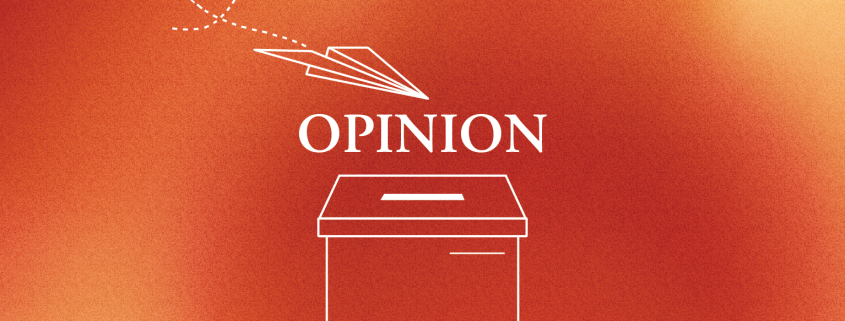Your TikTok therapist needs their license revoked
One of my earliest childhood memories of unreasonable mental strife happened in the laundry room of my red bricked childhood home. It was a birthday party for one of the kids on my block, and for some reason, four-year-old me was losing her fucking mind at the prospect of having to socialize with an anthromorphic tiger mascot and making glib small talk over a fluorescent pink cake with my fellow preschool peers. Thus, I ran circles in my laundry room until I mustered up the courage to cross the street.
Another core memory consists of locking myself in the third grade bathroom for over an hour when one of my classmates threw up into the recycling bin (with better aim, maybe he would have chosen the compost bin, a thought for next time), paralyzed with fear. Emetophobia was its name, and made me into the asshole who routinely avoided taking care of their friends when they had over indulged.
Experiences like these are ever commonplace, and much more commonly discussed and accepted now than when I was a kid. Mental health issues have risen in recent years, by 13% in the past decade, with 20% of children and adolescents living with mental illness. Concurrently, prescription of mental health medication has seen an uptick, with 1 in 5 Americans taking some form of mental health medication. It’s clear that mental health issues are prevalent in our country, but these are often difficult to diagnose or treat due to the high costs of treatment.
As with everything else, enter social media. TikToks that have bylines such as “Things You Didn’t Know Were Symptoms of ADHD” with a “therapist” or simply just someone trying to produce content pointing to glowing words of a conglomerate of general symptoms have proliferated into the digital sphere.
There seems to be a rise in jargon and diagnoses being tossed around, a shift to making everything clinical. When there is something off kilter, some atypical behavior, it must be indicative of some greater problem, some diagnosable cause fixed by a cocktail of pharmaceuticals that serve for more of a quick fix than the active unlearning of habits and mindset through therapy. The latter, of course, being a privilege most cannot afford.
It is possible to find comfort in words and diagnosis, a flat answer, an explanation as to why we behave certain ways. One can find solace but also hyper diagnose.
Could these symptoms not just be a greater reflection of our society at large? At one that requires us to work to the bare bone in order to succeed? One that requires optimization? This world is tiring, confusing and full of conflicts and stressors to cause strife, sometimes causing more strife than usual. Thus, it makes sense that people would take a grab bag of DSM-V words that help explain the unexplainable.
Did you see a licensed professional? Or did you just see a pastel pink infographic with a glorified horoscope of your mental health diagnosis? Generalizing symptoms and throwing around words is damaging and can cause some of these words to lose meaning.
These, of course, also serve as successful marketing tactics. As Don Draper states in “Mad Men,” advertising is happiness. If one is deeply convinced of their life being terrible, they will buy into any solution. While writing this, I went to my Instagram explore page, to a post stating “Signs it’s getting unhealthy again…” The signs, of course, were followed by a push to purchase a self help book. A general sentiment of unhappiness sure as hell serves as a great way to push product.
I deleted TikTok at the beginning of this year, knowing well enough I had been reading into these posts too much. Yet, the cookies in my phone had gained all information necessary for any account with a Canva subscription to light up my Instagram explore page with infographics so lovingly informing me what trauma looks like and what to do with an insecure attachment style.
Sandwiched in between a duck playing drums with its feet and an infographic telling me how many calories to cut until I hate myself just a bit less are helpful twelve step programs on “How to love someone with OCD” and what quirks in my personality might actually be a trauma response or ADHD symptoms.
Deeply convinced I had some other harrowing mental health affliction, I completed neuropsychological testing this past summer, needing to verify that I had ADHD. But no, I did not, it was simply a manifestation of my concurrent anxiety, symptoms that would subside once I dealt with the pesky worms in my brain convincing myself of my inadequacy and causing my hands to unreasonably perspire.
In a plague of insecurity and a lack of clarity, power can be found through words, labels and orange pill bottles for better and for worse. I can now hold my friend’s hair back and talk myself down from delusions thanks to cognitive behavioral therapy — something I don’t think the Lexapro initially suggested could have accomplished the same way that unlearning thought processes does.
Yet I have also learned playing with hair ties at eighth grade assemblies isn’t indicative of a focus problem. As discussed by Jessica Bennett in The New York Times, if everything is indicative of harm, of trauma, of some greater problem, is anything? We are complex beings with experiences and imperfect traits, not just at least 5 of 9 symptoms from a subset.

